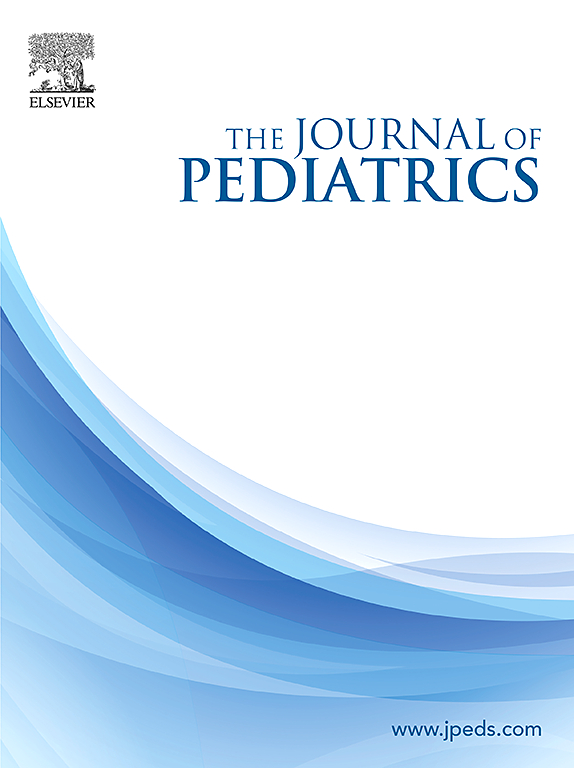Evaluation of an Influenza Vaccination Program in the Pediatric Emergency Department
IF 3.9
2区 医学
Q1 PEDIATRICS
引用次数: 0
Abstract
Objective
To evaluate influenza vaccine administration rate among eligible patients in pediatric emergency departments (EDs) following the introduction of a standardized vaccination program.
Study design
We conducted a retrospective study of children ≥6 months of age evaluated in a tertiary care pediatric ED and 3 affiliated ED sites. Our preintervention period was September 2019 through April 2020, and intervention period was September 2020 through April 2023. Our intervention comprised nursing education, standing orders, and a best practice advisory in the electronic health record. Our primary outcome was administration of influenza vaccine in the ED.
Results
There were 51 581 and 144 811 children in the preintervention and intervention periods with 64 705 and 172 021 ED encounters, respectively. The intervention increased the odds of vaccination by 15.22 (95% CI: 12.39-18.70), from 272 influenza vaccines in the preintervention period to 1892, 2141, and 755 in the intervention seasons (P < .001). During the intervention period, children who received influenza vaccines compared with those who did not were more likely to be older (median 8.5 years vs 5.8 years), of Black race (8.4% vs 7.2%) or multiple/other race (26.0% vs 19.8%), Hispanic ethnicity (46.0% vs 34.7%), with public insurance (64.3% vs 56.0%), and of lower acuity triage level 4 or 5 (64.2% vs 56.8%), P < .001 for all.
Conclusions
Implementation of a standardized influenza vaccination program in the ED can increase vaccination rates, particularly among minority and government-insured children. These interventions can address vaccine disparities and are easily sustainable with potential to reduce the public health burden of influenza.
儿科急诊科流感疫苗接种计划的评估。
目的:评价在引入标准化疫苗接种计划后,儿科急诊科(ED)符合条件的患者的流感疫苗接种率。研究设计:我们对一家三级儿科急诊科(ED)和三家附属ED进行了一项年龄≥6个月的儿童的回顾性研究。预干预期为2019年9月至2020年4月,干预期为2020年9月至2023年4月。我们的干预措施包括护理教育、常规命令和电子健康记录中的最佳实践咨询。结果:在干预前和干预期间,分别有51,581名和144,811名儿童和64,705名和172,021名儿童接种了流感疫苗。干预使疫苗接种的几率增加了15.22 (95% CI 12.39-18.70),从干预前的272支流感疫苗增加到干预季节的1892、2141和755支(p < 0.001)。在干预期间,与未接种流感疫苗的儿童相比,接种流感疫苗的儿童更有可能是年龄较大(中位数为8.5岁对5.8岁)、黑人(8.4%对7.2%)或多种族/其他种族(26.0%对19.8%)、西班牙裔(46.0%对34.7%)、有公共保险(64.3%对56.0%),以及视力分类等级较低的4级或5级(64.2%对56.8%),所有的p < 0.001。结论:在ED实施标准化的流感疫苗接种计划可以提高疫苗接种率,特别是少数民族儿童和政府保险儿童。这些干预措施可以解决疫苗差异问题,并且易于持续,有可能减轻流感造成的公共卫生负担。
本文章由计算机程序翻译,如有差异,请以英文原文为准。
求助全文
约1分钟内获得全文
求助全文
来源期刊

Journal of Pediatrics
医学-小儿科
CiteScore
6.00
自引率
2.00%
发文量
696
审稿时长
31 days
期刊介绍:
The Journal of Pediatrics is an international peer-reviewed journal that advances pediatric research and serves as a practical guide for pediatricians who manage health and diagnose and treat disorders in infants, children, and adolescents. The Journal publishes original work based on standards of excellence and expert review. The Journal seeks to publish high quality original articles that are immediately applicable to practice (basic science, translational research, evidence-based medicine), brief clinical and laboratory case reports, medical progress, expert commentary, grand rounds, insightful editorials, “classic” physical examinations, and novel insights into clinical and academic pediatric medicine related to every aspect of child health. Published monthly since 1932, The Journal of Pediatrics continues to promote the latest developments in pediatric medicine, child health, policy, and advocacy.
Topics covered in The Journal of Pediatrics include, but are not limited to:
General Pediatrics
Pediatric Subspecialties
Adolescent Medicine
Allergy and Immunology
Cardiology
Critical Care Medicine
Developmental-Behavioral Medicine
Endocrinology
Gastroenterology
Hematology-Oncology
Infectious Diseases
Neonatal-Perinatal Medicine
Nephrology
Neurology
Emergency Medicine
Pulmonology
Rheumatology
Genetics
Ethics
Health Service Research
Pediatric Hospitalist Medicine.
 求助内容:
求助内容: 应助结果提醒方式:
应助结果提醒方式:


